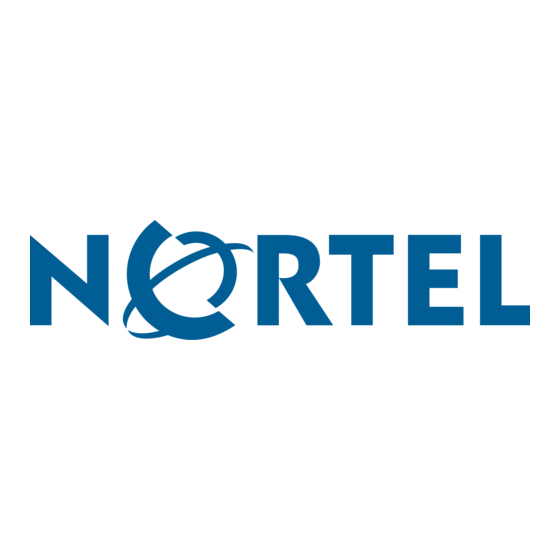Summary of Contents for Nortel BayStack 380
- Page 1 Part No. 212860-A June 2002 4655 Great America Parkway Santa Clara, CA 95054 Installing the BayStack 380 10/100/1000 Switch...
-
Page 2: Statement Of Conditions
In the interest of improving internal design, operational function, and/or reliability, Nortel Networks NA Inc. reserves the right to make changes to the products described in this document without notice. Nortel Networks NA Inc. does not assume any liability that may occur due to the use or application of the product(s) or circuit layout(s) described herein. -
Page 3: About This Guide
Adequate space at the front and rear of the switch for access to cables. If you are installing a single BayStack 380 Switch on a table or shelf, make sure the surface will support at least 5 to 10 pounds. -
Page 4: Package Contents
Screws for attaching brackets to the switch • Screws for attaching the switch to the equipment rack 3= Rubber footpads 4= Documentation Kit • Read Me First sheet • Installing the BayStack 380 10/100/1000 Switch • Warranty • Software license agreement • Safety Instructions 212860-A... -
Page 5: Installing The Switch On A Table Or Shelf
Installing the switch on a table or shelf You can install a single BayStack 380 Switch on any flat surface that can safely support the weight of the switch (5 to 10 pounds). Attach the rubber feet at the marked locations. -
Page 6: Installing The Switch In An Equipment Rack
Installing the switch in an equipment rack Required tool: Phillips screwdriver for attaching brackets to the switch Rack requirements: • A space of 2.8 inches is provided for each switch in an EIA or IEC standard 19-inch (48.2-centimeter) equipment rack. •... -
Page 7: Connection Requirements
For example, if you connect a RJ-45 port on the BayStack 380 to a MDI-X port on another switch, and both ports are configured with auto-negotiation enabled, you can use a straight through cable. Otherwise, you must use a crossover cable. - Page 8 Bi-directional data D- Auto-polarity The BayStack 380 Switch features auto-polarity. With autonegotiation enabled, auto-polarity automatically reverses the polarity of a pair of pins from positive to negative or negative to positive. This corrects the polarity of the received data if the port detects that the polarity of the data has been reversed due to a wiring error.
-
Page 9: Ac Power Specifications
1000 BTU/hr maximum Checking LEDs Refer to the illustration and tables that follow for descriptions of the LEDs on the BayStack 380 Switch. The tables describe LED operation for a switch that has completed its power-on self-tests. Figure 1 BayStack 380 Switch LED display panel... - Page 10 Table 4 BayStack 380 switch LED descriptions Label Type Color State Meaning Power status Green DC power is available to the switch’s internal circuitry. No AC power to switch or power supply failed. Status System Green Self-test passed successfully and switch is operational.
-
Page 11: Initial Switch Setup
1 second. It alternates in this way while the switch is Initial switch setup The BayStack 380 Switch begins switching as soon as you attach network devices and connect the switch to power. To manage the switch over the network or to perform TFTP operations, you must set certain IP parameters. - Page 12 Figure 2 BayStack 380 Main Menu screen Select IP Configuration/Setup (or press i) to display the IP Configuration/Setup menu. Note: The default management VLAN in the BayStack 380 Switch is VLAN 1. To manage the switch, make sure the network management station is on the management VLAN or is connected to the management VLAN through routers.
- Page 13 In-Band Subnet Mask field. This value is based on the class of the entered IP address. In the In-Band Subnet Mask field, enter the IP subnet mask address. In the Default Gateway field, enter the default gateway address. Installing the BayStack 380 10/100/1000 Switch...
- Page 14 212860-A...














Need help?
Do you have a question about the BayStack 380 and is the answer not in the manual?
Questions and answers